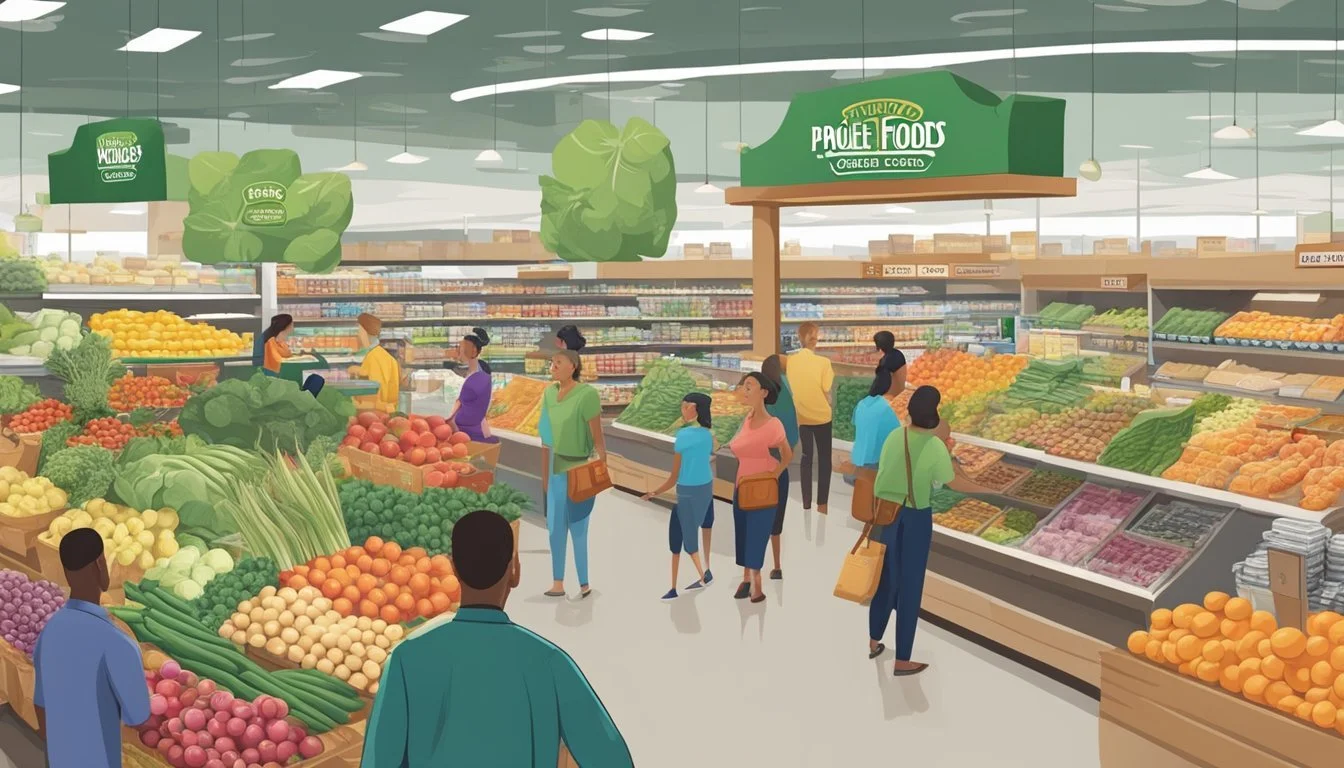Is Whole Foods Cheaper Than Ralphs?
Comparing Grocery Pricing
Part of Our Grocery Store Guide with Details on Whole Foods Market Prices and Ralphs Prices
Comparing prices between grocery chains is a common practice for budget-conscious shoppers, particularly when considering the cost of food at well-established stores like Whole Foods and Ralphs. Each of these grocery chains has cultivated a unique brand image and customer base. Whole Foods is often perceived as a purveyor of high-quality, organic products with a correspondingly higher price point, whereas Ralphs is seen as a more conventional supermarket offering competitive pricing on a wide variety of brands and products.
Recent market studies and customer anecdotes suggest that the pricing gap between Whole Foods and competitors such as Ralphs may not be as wide as it once was. While Whole Foods has historically been known for its premium prices, efforts to reposition the brand and provide better value to customers have been reported. Key product categories such as organic produce have been flagged as areas where Whole Foods is competitive, and in some cases, even cheaper. However, for a more nuanced understanding of value, it's essential to compare specific product prices and consider factors like quality, product range, and shopping experience.
Comparing Whole Foods and Ralphs
In this section, the focus lies on the distinct differences between Whole Foods and Ralphs, from pricing structures to their organic product offerings and overall consumer experience. This comparison includes their respective discounts and savings programs which are integral to understanding their market positioning.
Price Range Overview
Whole Foods Market is known for its premium items and consequently, it typically commands higher prices compared to Ralphs. In contrast, Ralphs tends to have lower prices across a variety of products. Consumers seeking cost-effectiveness generally prefer Ralphs for their grocery needs.
Whole Foods: Higher price point; premium options
Ralphs: Lower price point; cost-effective options
Organic Selection and Pricing
Whole Foods has a strong reputation for its wide array of organic products. The prices for these items are usually higher due to the quality and standards associated with organic certification. Ralphs also offers organic selections, though the variety may be less extensive than at Whole Foods. Pricing for organic items at Ralphs is typically more affordable than Whole Foods.
Whole Foods: Extensive organic selection; higher organic pricing
Ralphs: Available organic selection; more affordable organic pricing
Overall Shopping Experience
The shopping experience at both stores differs considerably. Whole Foods provides a premium experience with a focus on natural and organic products, often including exclusive items. Ralphs offers a more traditional grocery store experience with a wide array of mainstream brands and products.
Whole Foods: Premium, natural-focused shopping environment
Ralphs: Traditional, mainstream grocery shopping environment
Discounts and Savings Programs
Whole Foods shoppers who have Amazon Prime memberships have access to prime member deals and occasional discounts. Meanwhile, Ralphs offers its own savings and loyalty programs which can lead to significant discounts on everyday items. Both stores have grocery delivery options, providing additional convenience to their customers.
Whole Foods: Amazon Prime discounts, prime member deals
Ralphs: Store loyalty discounts, common deals
Regarding checkout efficiency, both stores strive to maintain smooth operations, although the specific features like self-checkout availability may vary by location.
Product Comparison
When comparing Whole Foods and Ralphs, customers often look at the quality and price of produce, meat, seafood, and pantry staples as indicators of value. This section provides a detailed look into these categories to help shoppers make informed decisions.
Produce Quality and Variety
Whole Foods is renowned for its high-quality organic produce, boasting an extensive variety of fruits and vegetables. The prices for their organic items may exceed those at Ralphs, but shoppers frequently find a broader selection, particularly for organic and specialty produce. Ralphs, however, often provides competitive prices on conventional produce, which could be more appealing for shoppers prioritizing budget over organic quality.
Meat and Seafood Comparison
Whole Foods generally offers meats that are antibiotic and hormone-free, with a clear emphasis on quality and ethical sourcing. Their seafood section similarly maintains a reputation for sustainable and responsibly-farmed options. While these factors contribute to higher prices compared to Ralphs, the meat and seafood at Whole Foods are often considered superior in terms of flavor and quality. Ralphs offers a wide variety of meat and seafood at lower prices, which might appeal to price-conscious consumers not prioritizing organic or sustainably-sourced options.
Deli and Bakery Offerings
The deli and bakery sections of Whole Foods are known for their artisanal cheese, bread, and snacks. Customers find exclusive flavors and gourmet options here. Despite the premium quality, Whole Foods' bakery items, such as freshly baked bread, are competitively priced, sometimes even cheaper than those at Ralphs. Ralphs' deli counters provide a wide range of products that cater to everyday needs at typically lower prices, yet they may not match the unique options available at Whole Foods.
Staples and Pantry Items
For pantry staples such as olive oil, salt, and other essentials, both Whole Foods and Ralphs offer a range of options at different price points. Whole Foods' 365 Everyday Value brand often provides affordable choices without compromising quality. For instance, Whole Foods' store-brand paper towels were found to be a better deal than a comparable product at Ralphs. However, Ralphs might offer better deals for name-brand staples when they have sales or use loyalty programs. Shoppers should consider their preferences for brand and quality against the price points of each store.
Brand and Store Concepts
Comparing Whole Foods and Ralphs presents a distinct contrast in branding and store concepts that cater to different consumer priorities. Each supermarket has carved out a niche focusing on their strengths—Whole Foods with organic and natural products, and Ralphs with a variety of conventional grocery items including store brands.
Organic and Natural Foods Focus
Whole Foods has built its brand around offering a wide selection of organic and natural foods. Known colloquially as "Whole Paycheck," this supermarket tends to command higher prices which reflect its investment in quality and sourcing standards. Ralphs, while offering a selection of organic options, leans towards a more traditional supermarket model, providing a balanced mix of both organic and more generic products.
Private Label Products
Ralphs is known for its private label products, enhancing affordability for budget-conscious consumers. These products span a range of generic to premium options, including organic selections. On the other hand, Whole Foods also touts an extensive range of store brands, predominantly focused on nutritious and environmentally conscious choices, which solidifies its position in the natural foods market.
Store Environment and Layout
The store environment and layout at Whole Foods typically feature an upscale, clean design with a robust produce section at the forefront, emphasizing the store's commitment to fresh, high-quality organic food items. Ralphs stores have a more conventional supermarket layout and design, prioritizing efficiency and shopper convenience, catering to a diverse clientele engaged in routine grocery shopping.
Market Analysis
This section explores the pricing dynamics between Whole Foods and Ralphs, analyzing public perception, and examining the brands' reputations and customer loyalty.
Competitor Comparison
Whole Foods Market, often associated with higher price points, has been found to offer competitive pricing on certain items. According to Investopedia, Whole Foods' pricing on produce is becoming more aligned with that of traditional grocery chains, evidenced by a Business Insider survey noting a mere 7% difference in produce prices between Whole Foods and Kroger's. Further, a report by Morgan Stanley highlights the narrowing gap, with Kroger now only around one-quarter cheaper than Whole Foods, a significant reduction from the historical 40% to 50% discount. Meanwhile, other grocery chains like Walmart continue to provide the cheapest options, especially for staple items, as identified by CBS News.
Price Perception in the Community
Price perception varies notably among consumers. Evident from discussions on platforms such as Reddit, consumers often perceive Whole Foods as a more expensive option, while Ralphs (owned by Kroger) is considered to be moderately priced. In community discussions, Whole Foods is still often seen as a pricier choice, despite recent efforts to reduce prices. However, this perception does not always translate to actual shopping behavior, as individuals will weigh other factors such as convenience and product preference when choosing where to shop.
Reputation and Consumer Loyalty
Whole Foods has developed a strong reputation for quality and a loyal following, often referred to as a "cult following." This has been instrumental in maintaining their market presence despite their higher prices. Ralphs, while not having as strong of a devoted base as Whole Foods, benefits from being part of the Kroger chain, which possesses a widespread reputation for value and variety. Other stores like Trader Joe’s and Sprouts Farmers Market also enjoy loyal followings due to their unique offerings and perceived value. Consumer loyalty tends to hinge not only on price but also on perceived value, product assortment, and overall shopping experience.
Economic Considerations
When comparing Whole Foods and Ralphs, it's essential to evaluate their cost-effectiveness strategies, regional price variations, and the influence of their parent companies. These factors significantly impact the prices consumers face.
Cost-Effectiveness Strategies
Both Whole Foods and Ralphs deploy cost-effectiveness strategies to attract customers. Whole Foods, now owned by Amazon, offers savings options like Amazon Prime member deals and discounts on staple items. On the other hand, Ralphs, a part of the Kroger family, leverages economies of scale and frequent promotions to keep prices competitive. In specialty categories like organic produce, Aldi and Costco are recognized for steep savings, suggesting that consumers are likely to save money by considering these area options alongside traditional grocers.
Grocer Strategy Notable Savings Whole Foods Amazon Prime deals Organic baby spinach, Organic blueberries Ralphs Kroger promotions Staple items, across various categories Aldi Low-cost business model Overall prices, Specialty categories Costco Membership-based savings Bulk purchases, Organic selections
Regional Price Variations
Prices at both Whole Foods and Ralphs may vary by region. In cities like Los Angeles and Austin, where both retailers operate, the cost of living and consumer demand can influence pricing. Whole Foods prices for organic produce can be lower in areas where natural and organic food markets are more competitive. Ralphs, with a more traditional supermarket approach, may offer less variability in its pricing but still adjusts its prices according to local market conditions.
Impact of Parent Companies
The ownership of Whole Foods by Amazon has allowed for integration with Amazon's technological and distribution efficiencies, potentially leading to reduced overall prices. Ralphs' affiliation with Kroger, the largest supermarket chain in the U.S., can result in cost savings due to larger buying power and shared logistics capabilities. Both parent companies have a significant impact on their subsidiaries' pricing strategies in an effort to remain competitive with specialty grocers like Aldi and wholesale retailers like Costco.
Conclusion
When considering grocery shopping options between Whole Foods and Ralphs, consumers often weigh factors such as quality food, value, and availability of healthy choices. Whole Foods caters to a market segment that prioritizes organic and natural products, which contributes to its loyal following. However, it is typically associated with higher overall prices when compared to Ralphs.
Ralphs, on the other hand, is recognized for providing a mix of conventional and organic products at more competitive prices. Shoppers looking to save money without compromising significantly on quality may find Ralphs to be the more economical choice.
Those keen on maintaining a healthy diet with varied and specialty items may well find that the extra cost of shopping at Whole Foods is justified. Despite the higher costs, Whole Foods' emphasis on healthy choices and quality can be a deciding factor for consumers dedicated to that lifestyle.
For price-conscious consumers, Ralphs offers considerable value, especially for those willing to experiment with store brands or take advantage of sales and loyalty programs. It's important to note that prices can vary based on location, promotions, and seasonal availability.
In conclusion, shoppers should consider their priorities, whether it's price, quality, or specific dietary needs, and choose the grocery store that best aligns with their individual or family needs. Regular comparison shopping and staying informed about deals can help in making cost-effective and health-conscious decisions.






